10 Royal Crown Derby Patterns That Can Sell for Thousands
For centuries, Royal Crown Derby has created stunning porcelain pieces that have captivated collectors worldwide. Their patterns, many of which were introduced in the 1700s, continue to hold significant value today. These designs are often found on fine china, teapots, and other luxury homeware. With a reputation for exceptional detail and craftsmanship, Royal Crown Derby items have become prized possessions. Whether you are an established collector or new to the world of antiques, these patterns offer an exciting opportunity.
This post may contain affiliate links, which helps keep this content free. Please read our disclosure for more info.
Royal Crown Derby Imari Pattern
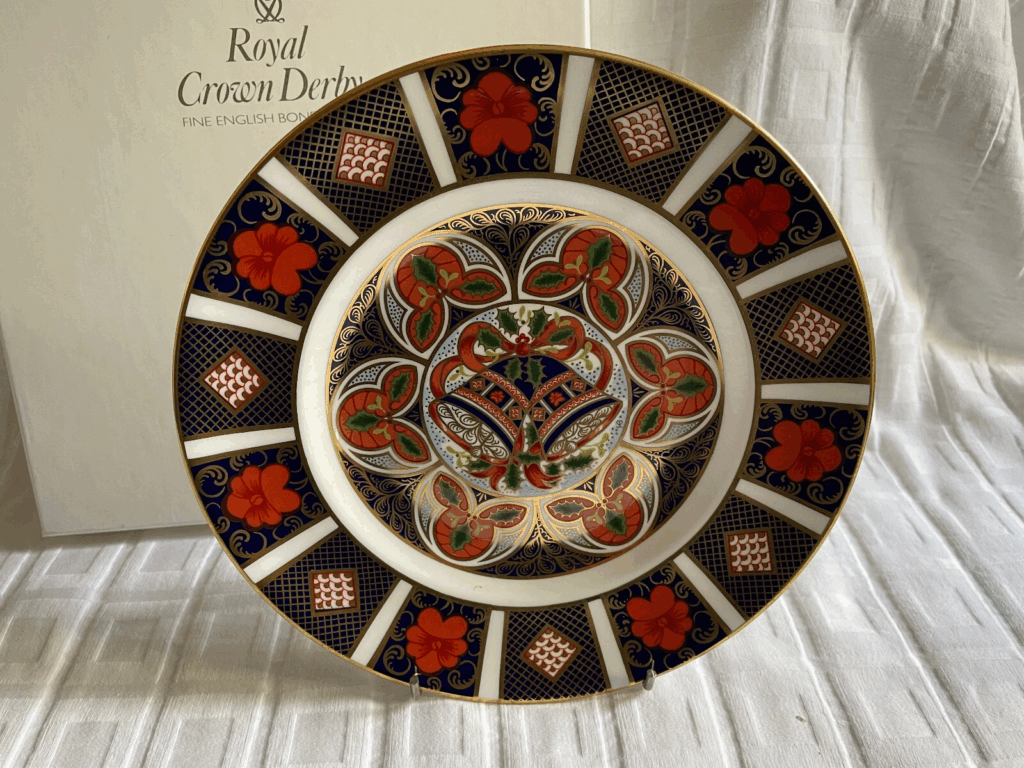
The Imari pattern was first introduced in the early 19th century by Royal Crown Derby, drawing inspiration from Japanese porcelain. This design features a vibrant combination of red, blue, and gold, making it one of the most recognizable patterns. When first released, the cost of these pieces was relatively high, but they were mostly accessible to wealthy households. Today, antique Imari pieces can sell for up to $10,000, especially when in good condition. This pattern remains highly sought after by collectors worldwide due to its historical value and beautiful craftsmanship.
In its early years, the Imari pattern was used primarily on dinnerware and tea sets, but today it is also found on vases, plates, and figurines. The combination of bold colors and fine detailing continues to captivate collectors. Items from the early 19th century are especially valuable, as they represent the high point of British porcelain production. The intricate gold work and vivid blue hues are a major reason for its continued popularity. As time has passed, the value of these pieces has steadily increased due to their rarity and appeal.
Royal Crown Derby Old Imari
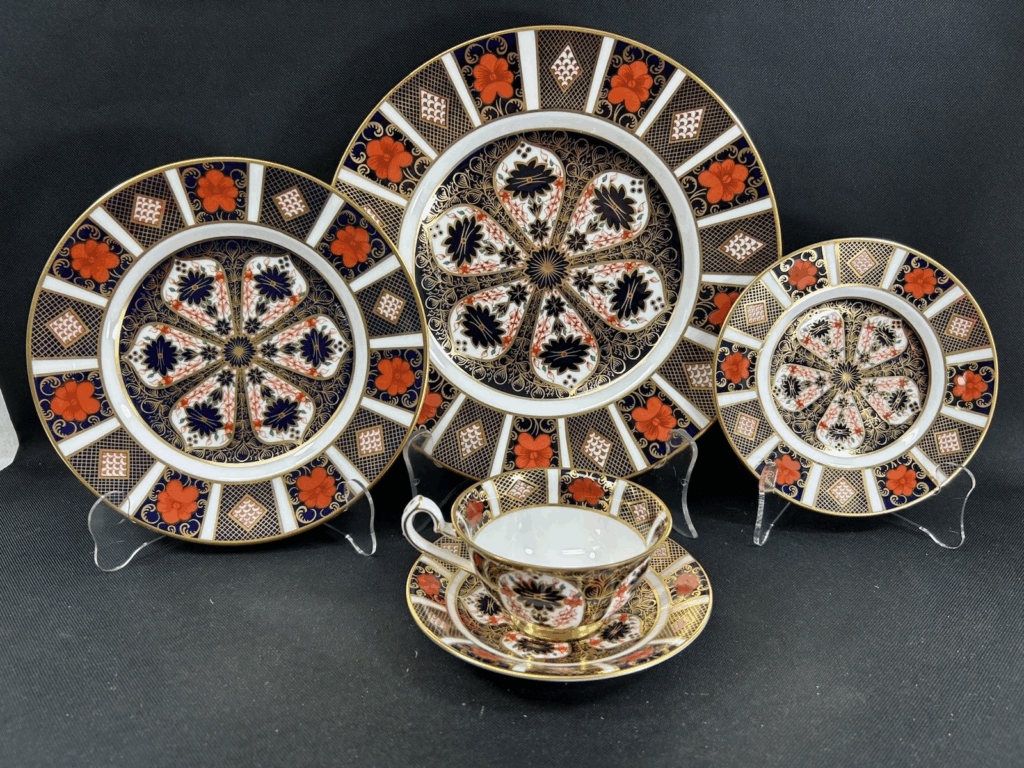
Released in the 1800s, Royal Crown Derby’s Old Imari is another standout design, featuring deep red and blue colors highlighted with gold detailing. The pattern is known for its exotic influence, as it draws inspiration from traditional Japanese designs. Upon its release, Old Imari was a premium choice for upper-class buyers, offering luxury in every piece. Today, the value of these items has grown significantly, with pieces reaching prices of $5,000 to $12,000. The historical significance and vibrant design make Old Imari one of the most valuable patterns in the Royal Crown Derby collection.
Old Imari’s appeal lies in its intricate floral motifs and the dynamic use of color. The design was originally featured on tea sets and dinnerware, and it remains a prized pattern for collectors of antique porcelain. Over time, it has become rarer, increasing its value in the market. The pattern’s vibrant red and blue shades are complemented by delicate gold accents that give it a regal and timeless quality. Collectors now seek out both individual pieces and complete sets, making it a staple in any serious collection.
Royal Crown Derby Derby Panel
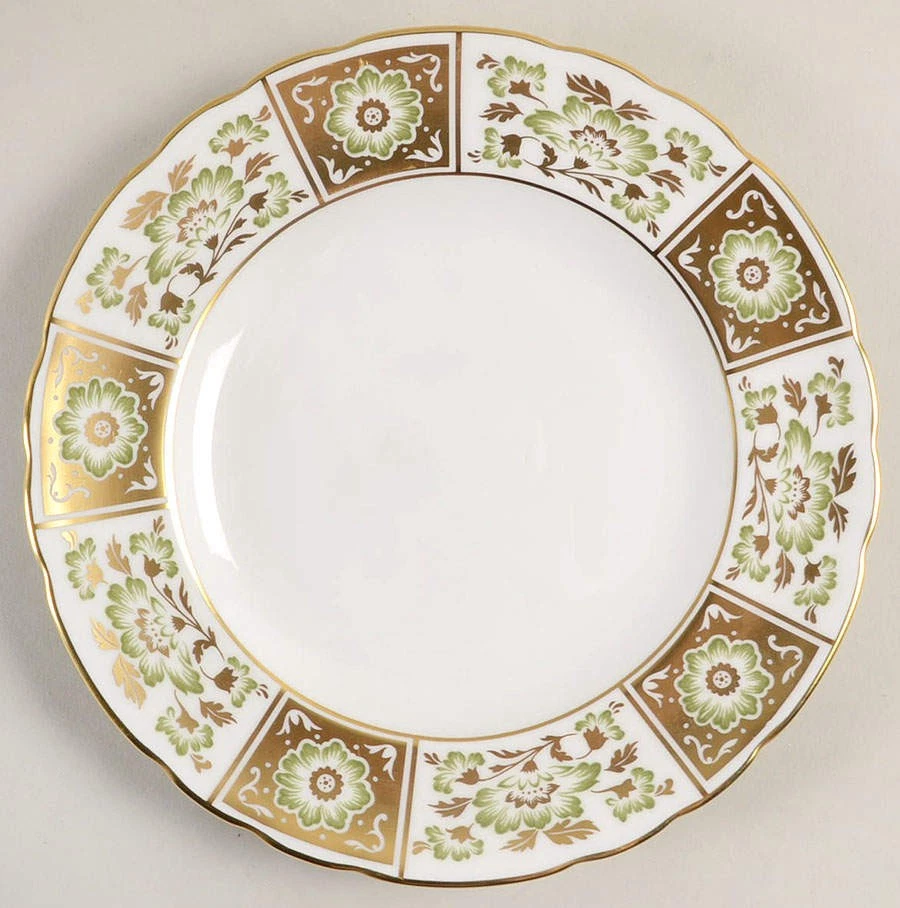
First introduced in the 19th century, the Royal Crown Derby Derby Panel pattern is known for its bold geometric design and rich, detailed floral motifs. The pattern was primarily used for formal dinnerware and luxury table settings. When it was first launched, Derby Panel pieces were considered expensive, targeted at aristocratic households. Today, the market value for Derby Panel items can range from $3,000 to $6,000, depending on their condition and rarity. It remains a popular choice due to its elegant and timeless design.
The Derby Panel design is characterized by a combination of floral patterns framed by intricate borders, often enhanced with gold detailing. The pattern became an emblem of fine British porcelain, highly sought after during the Victorian era. Although it was originally not as expensive as some other patterns, its desirability has grown over the years. Antique pieces, especially those from the early 1800s, are especially valuable today.
Royal Crown Derby Red Aves Pattern

Introduced in the late 19th century, the Red Aves pattern by Royal Crown Derby features birds and floral motifs in vivid red, blue, and gold, making it one of the most striking designs in their collection. The intricate design captures the beauty of nature and the elegance of British porcelain craftsmanship. Initially released as a premium option, Red Aves was sought after by aristocratic families looking for luxurious dinnerware and decorative pieces. Today, Red Aves pieces can range from $4,000 to $6,500, depending on their condition and rarity.
The Red Aves pattern is recognized for its delicate portrayal of birds, often perched among lush floral arrangements. The deep red tones, complemented by gold detailing, give the design an opulent look. Red Aves was originally used for fine china and decorative items, which only adds to its historical value. As this pattern becomes rarer over time, its market value continues to rise, making it a prized item for collectors of Royal Crown Derby porcelain. The combination of nature-inspired designs and luxurious detailing makes this a coveted pattern in the porcelain world.
Royal Crown Derby King’s Pattern
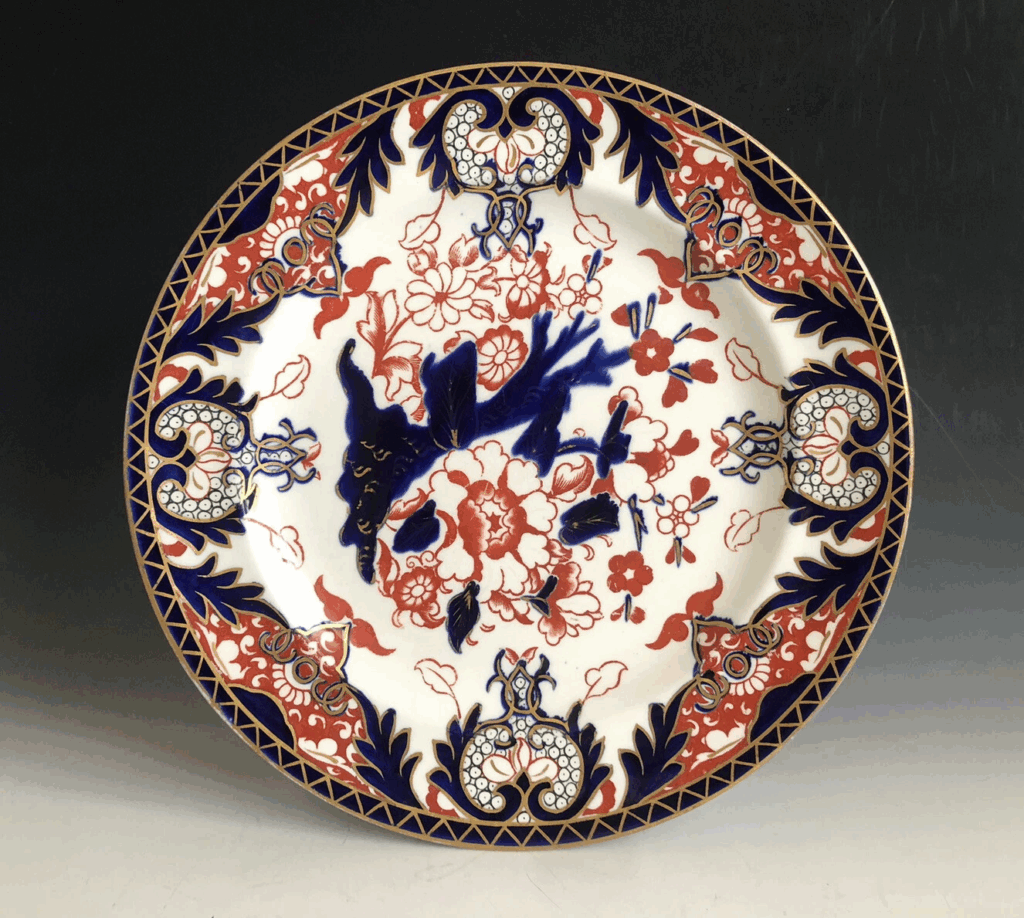
Introduced in 1815, the Royal Crown Derby King’s Pattern was designed to cater to the British royal family, making it one of the most prestigious patterns from Royal Crown Derby. The design features a combination of rich gold detailing and elegant floral motifs, creating a truly luxurious look. Initially, it was quite costly, with only the wealthiest buyers able to afford it. In the modern market, King’s Pattern pieces can sell for $8,000 or more, with some rare items reaching even higher prices. Its connection to the royal family and fine craftsmanship continue to make it one of the most coveted porcelain patterns.
The King’s Pattern is often found on dinnerware, teacups, and platters, with each piece marked by its elegant gold borders and intricate floral designs. It was initially designed to provide regal dinner sets for aristocratic families. Today, the pattern’s association with royalty adds to its value and prestige. Pieces from the early 1800s, in particular, have become collector’s items, fetching premium prices. Due to its historical significance, this pattern is highly sought after by collectors looking for a piece of British history.
Royal Crown Derby Aesthetic Movement
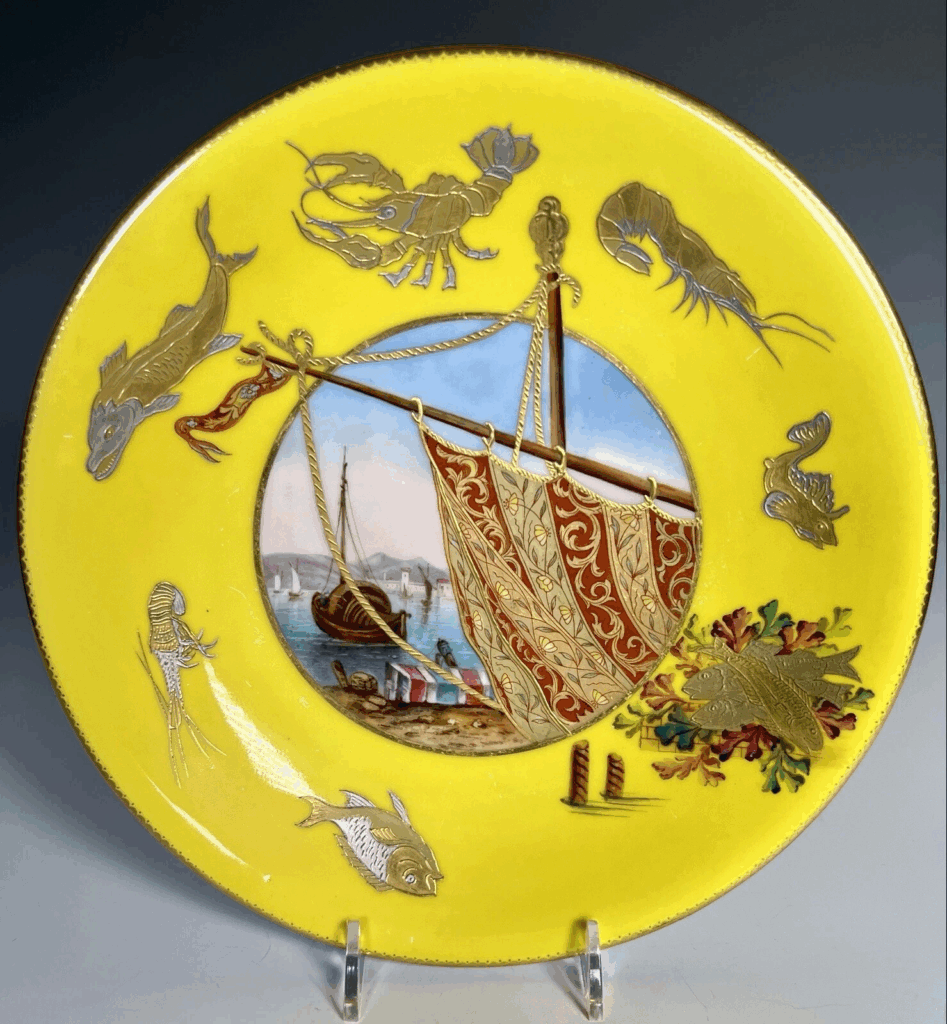
The Royal Crown Derby Aesthetic Movement pattern was introduced in the late 19th century and reflects the influence of Japanese art, which was becoming increasingly popular in the West. This pattern features bold and stylized floral designs set against a rich blue or green background. When first released, it was considered a luxurious choice, though it was somewhat more affordable than other patterns at the time. Today, Aesthetic Movement items can be valued from $6,000 to $10,000, with some rare pieces selling for even more. The pattern’s exotic influence and vibrant colors make it a highly desirable collectible.
Aesthetic Movement designs were part of a broader cultural shift toward valuing beauty and art for its own sake. The pattern is instantly recognizable by its bold use of color and stylized floral motifs, often set against contrasting backgrounds. These pieces were highly regarded for their artistry and were often displayed as both functional tableware and decorative art. Their uniqueness and connection to the art movement of the time make them a prized possession for collectors.
Royal Crown Derby Cobalt King’s Pattern
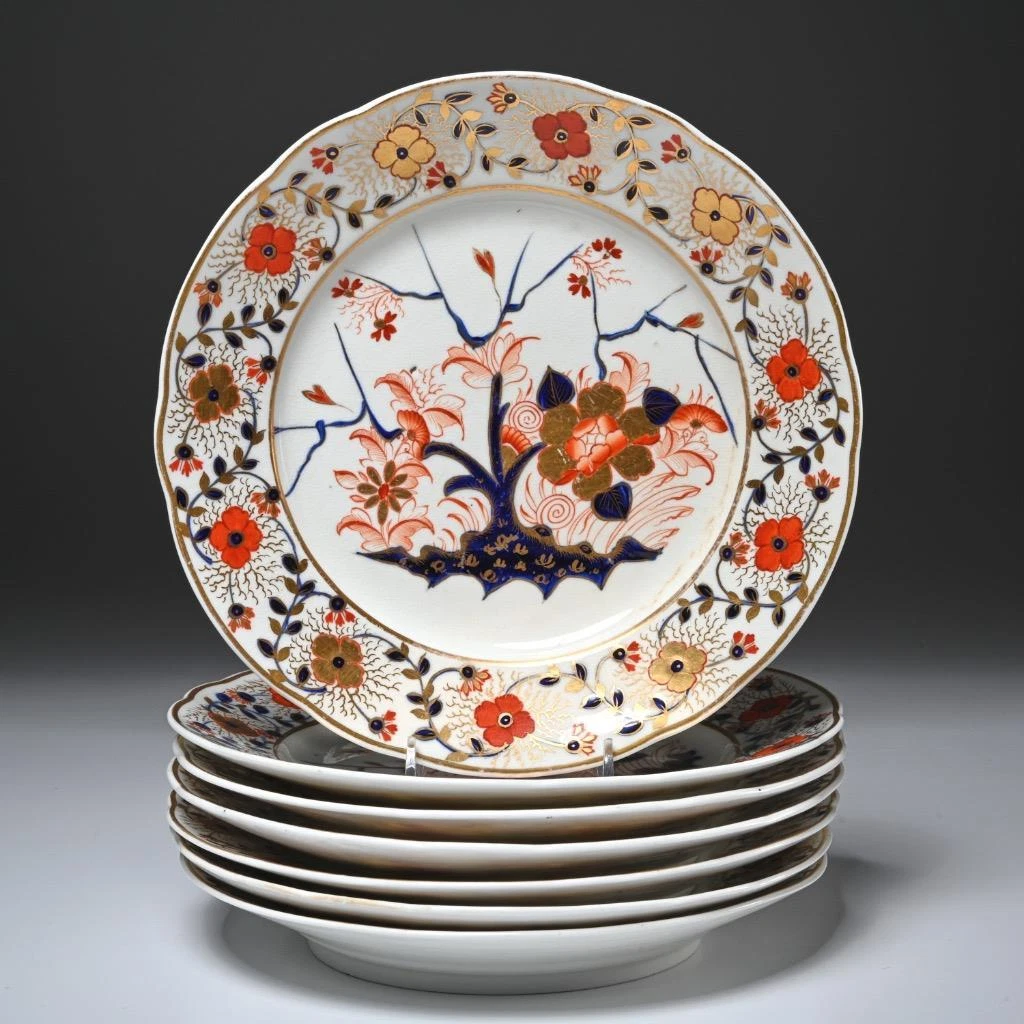
First introduced in the early 19th century, the Royal Crown Derby Cobalt King’s Pattern is known for its striking blue and gold colors. This pattern was a favorite among the British aristocracy and featured detailed borders and floral motifs. Originally, the pieces were priced as premium items, with only a select group able to afford them. Today, Cobalt King’s Pattern pieces are highly valuable, with prices ranging from $5,000 to $8,000 for rare items. The bold cobalt blue background and intricate gold detailing continue to make it a favorite among collectors.
Cobalt King’s Pattern is often found on fine china and serving pieces, with its elegant design adding a sense of grandeur to any collection. The luxurious use of cobalt blue combined with the refined gold trim makes these pieces stand out. The pattern was specifically designed for the British elite, which gives it historical significance. As fewer pieces remain on the market, the demand for Cobalt King’s Pattern has driven up its price over the years. Today, collectors prize it for its beauty, rarity, and connection to British royal porcelain.
Royal Crown Derby Red and Gold Roses
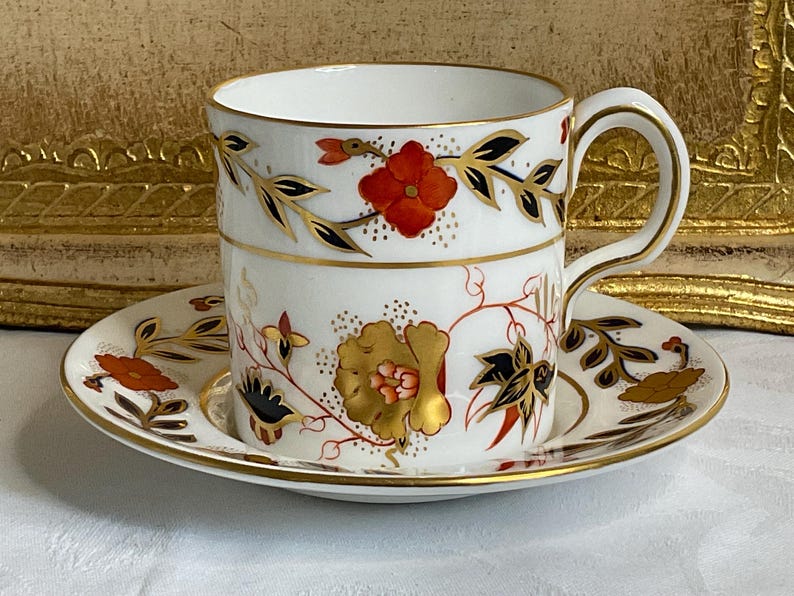
The Royal Crown Derby Red and Gold Roses pattern, first introduced in the early 19th century, features beautiful rose motifs in red and gold on a white porcelain background. This design was highly popular during the Victorian era, adding a touch of luxury and elegance to fine tableware. When it was first released, Red and Gold Roses pieces were priced as premium options, making them highly sought after by the wealthy. Today, this pattern can sell for $3,500 to $6,000, depending on its condition and rarity. Its timeless floral appeal and fine detailing continue to make it a favorite among collectors.
The Red and Gold Roses pattern is characterized by its vivid red roses, delicately outlined with gold accents. This combination of colors and the fine craftsmanship of Royal Crown Derby makes the pattern visually striking. Initially, the pattern was mostly used for dinnerware and serving pieces, but today it is also found on decorative items. The historical significance and visual beauty of Red and Gold Roses have helped maintain its high value. As fewer items remain in circulation, the market price for these pieces has steadily increased.
Royal Crown Derby Mandarin Pattern
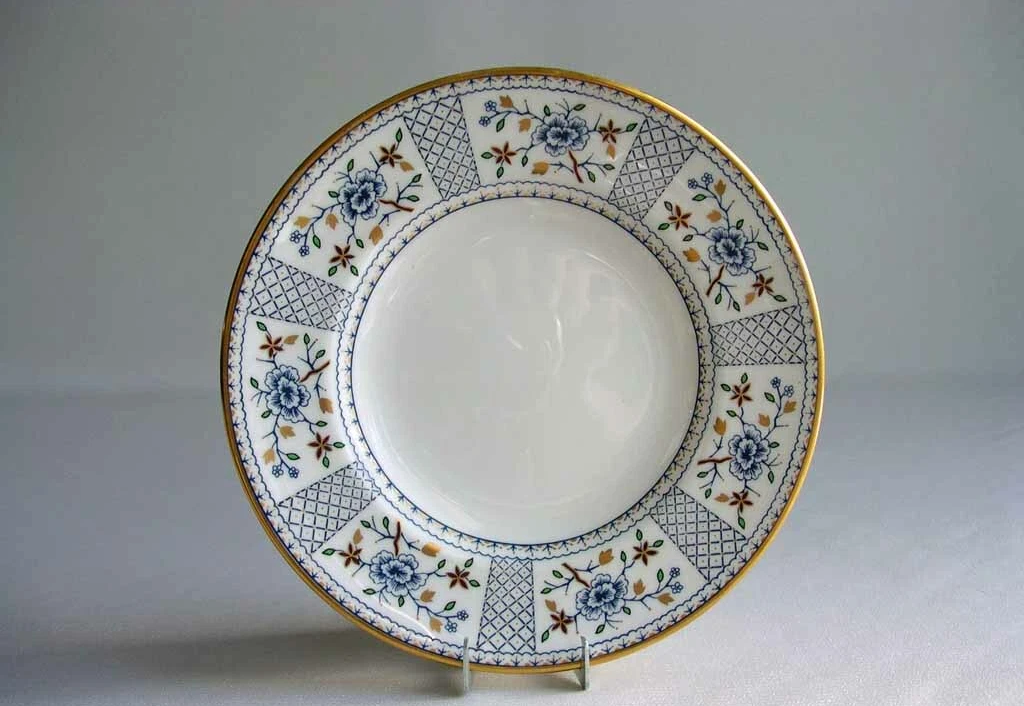
Released in the 19th century, the Royal Crown Derby Mandarin pattern is known for its vibrant orange, red, and gold tones, making it one of the most visually striking designs. This pattern draws inspiration from traditional Chinese porcelain, with floral and landscape motifs adding to its exotic appeal. Initially, Mandarin was priced as a luxury option, accessible to a select group of affluent buyers. Today, Mandarin pattern items can fetch between $5,000 and $10,000, with rare pieces reaching even higher prices. Its bold design and historical value make it highly sought after in the collectible porcelain market.
Mandarin features intricate designs with bold colors, including vivid reds and oranges, set against a white porcelain background. The design’s inspiration from Chinese porcelain art made it especially popular during the Victorian era. These pieces were originally used for fine dinnerware and decorative items, and their value has only increased over time. Collectors are particularly drawn to the uniqueness of the pattern and its colorful, exotic motifs. Mandarin remains one of the most coveted patterns in the Royal Crown Derby collection.
Royal Crown Derby Persian Pattern
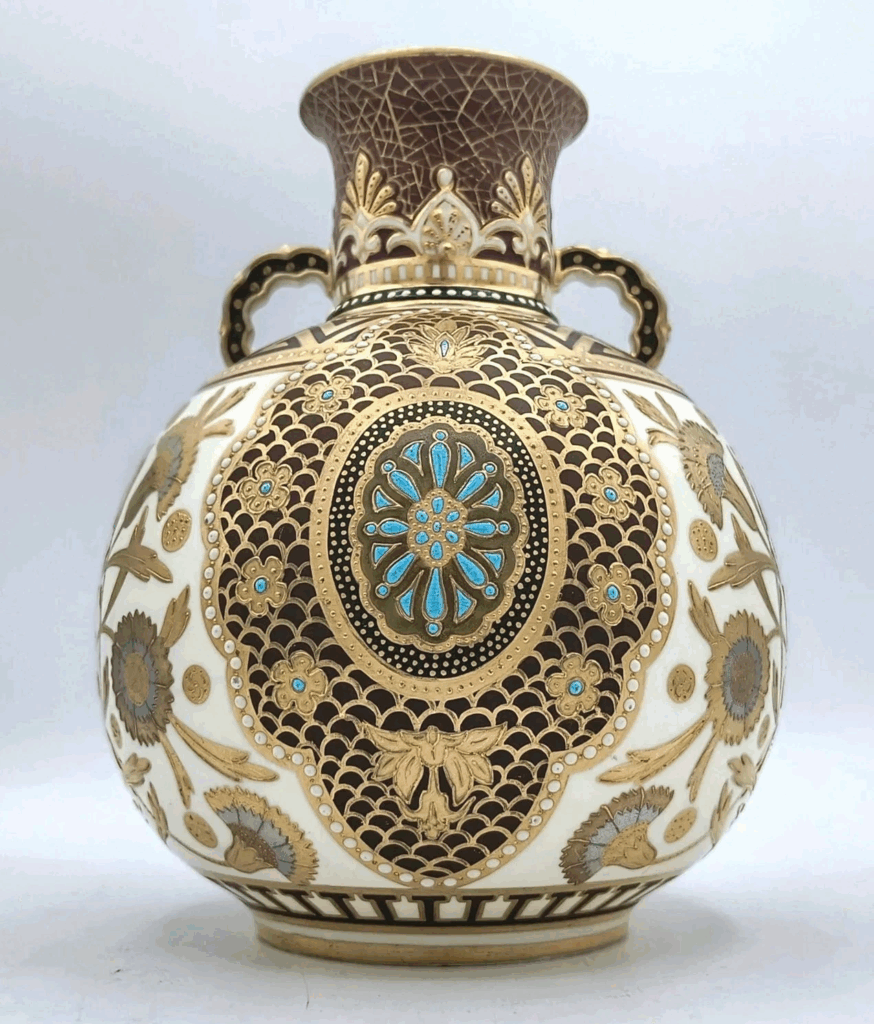
The Royal Crown Derby Persian pattern, introduced in the early 20th century, is known for its exotic floral designs in deep red, gold, and green tones. This design was inspired by Persian art, which influenced Western porcelain designs during this period. Originally considered a luxury pattern, Persian was priced to reflect its elegance and rarity, catering to the wealthier classes. Today, Persian pattern pieces can be valued between $4,000 and $8,000, depending on their condition and rarity. The intricate detailing and rich color palette continue to make this pattern highly desirable among collectors.
The Persian pattern features a combination of stylized flowers, scrolls, and intricate borders, all set against a rich, contrasting background. The design’s Middle Eastern influence, along with its vibrant colors and gold detailing, makes it stand out from other Royal Crown Derby patterns. As fewer pieces remain, the market value for Persian continues to rise, driven by both its beauty and rarity. Collectors of fine porcelain often seek these pieces for their elegance and connection to exotic art forms.
Collectors have long appreciated these items for their intricate designs and historical significance. As demand for these exquisite patterns continues to grow, their value only increases over time. Adding a Royal Crown Derby piece to your collection is not only a great way to appreciate fine art but also a smart investment in timeless elegance.
This article originally appeared on Avocadu.
